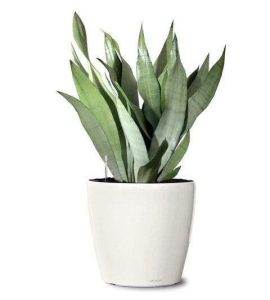- English
- Chinese
- French
- German
- Portuguese
- Spanish
- Russian
- Japanese
- Korean
- Arabic
- Irish
- Greek
- Turkish
- Italian
- Danish
- Romanian
- Indonesian
- Czech
- Afrikaans
- Swedish
- Polish
- Basque
- Catalan
- Esperanto
- Hindi
- Lao
- Albanian
- Amharic
- Armenian
- Azerbaijani
- Belarusian
- Bengali
- Bosnian
- Bulgarian
- Cebuano
- Chichewa
- Corsican
- Croatian
- Dutch
- Estonian
- Filipino
- Finnish
- Frisian
- Galician
- Georgian
- Gujarati
- Haitian
- Hausa
- Hawaiian
- Hebrew
- Hmong
- Hungarian
- Icelandic
- Igbo
- Javanese
- Kannada
- Kazakh
- Khmer
- Kurdish
- Kyrgyz
- Latin
- Latvian
- Lithuanian
- Luxembou..
- Macedonian
- Malagasy
- Malay
- Malayalam
- Maltese
- Marathi
- Mongolian
- Burmese
- Nepali
- Norwegian
- Pashto
- Persian
- Punjabi
- Serbian
- Sesotho
- Sinhala
- Slovak
- Slovenian
- Somali
- Samoan
- Scots Gaelic
- Shona
- Sindhi
- Sundanese
- Swahili
- Tajik
- Tamil
- Telugu
- Thai
- Ukrainian
- Urdu
- Uzbek
- Vietnamese
- Welsh
- Xhosa
- Yiddish
- Yoruba
- Zulu
- Kinyarwanda
- Tatar
- Oriya
- Turkmen
- Uyghur

Te whare motuhake ahurei me te rau matomato me te mangere Sansevieria “Moonshine”. Ahakoa he tipu tiaki tino iti rawa atu, he pai ake te tipu o era atu whare. Te tirotiro i a Sansevieria Moonshine mai i nga kokonga maha - tae atu ki ona ahuatanga ka tipu haere, nga tikanga taiao, me nga ahuatanga koiora-awhina.

Tipu nakahi
First, Sansevieria Moonshine’s light environment clearly influences its development rate. Being a shade-tolerant plant, Sansevieria Moonshine may flourish in low-light conditions; yet, this also implies that its development rate will be slowed in inadequate light. Although Sansevieria Moonshine grows slowly generally, the pace of growth will rise with enough indirect light. Maintaining modest light is crucial for the proper development of Sansevieria Moonshine as too much light could cause the leaves to fade or even burn.
Me pehea te whai kiko me te oneone ki te kaha o te whanaketanga?
Ko Sansevieria Maonshine he iti te hiahia o te oneone, heoi, ko te kowhiri i te oneone tika ka awhina pea ki te whakapiki i tana rereketanga o te whakawhanaketanga. Te whakato i roto i nga piihi oneone-pai mo te Tiger Tail Orchid Light. Ko te oneone taumaha, he ngoikore ranei te horoia ka ngawari ki te whakakoi i te pirau pakiaka, na reira ko te whakararu i te hauora me te whanaketanga o te tipu. I te nuinga o te wa e korero ana, whakaranu ana ki te perlite, te oneone onepu, te oneone kohua ranei he mea pai ake. Ko te oneone e tika ana mo te Tiger Tail Orchid e awhina ana ki te whakaheke i te whakaeke i te tipu, na reira i pai ai te whanaketanga o te whanaketanga.
Ko te tere o te whanaketanga o te Tiger Tail Orchid e tino whakaawe ana ma te whakainu i te waa. Ko te Tiger Tail Orchid Tohutoro toa te wai, na reira kaore e hiahiatia kia whakainu i te waa. I tua atu i te pikinga o te makuku o te oneone, ka nui rawa te whakamakuku i te pirau pakiaka, na reira ka aukati i te kaha whanaketanga. Ko te pupuri i te whakamarumaru ngawari i te wa e tipu haere ana ka taea te angitu; Heoi, i te takurua, i te ra ranei, me heke te whakamakuku. Ko te ako i te tikanga wai e tika ana kia kore e tutuki i te whanaketanga pai o te marama o te marama o Tiger Orchid engari he ahua ke ano tana kaha ki te tipu.
Te paanga o te haumākū me te pāmahana
Another crucial element influencing the development rate of Tiger tail orchid moonlight is temperature and humidity. Usually growing properly between 13℃ and 30℃, tiger tail orchid moonlight is flexible in temperature. Its development rate will suffer, nonetheless, from either too low or too high temperature. Tiger Tail Moonlight’s development rate will slow down greatly in cooler temperatures and may possibly become dormant. In a high temperature setting, particularly when it rises over 35℃, the plant may suffer from dehydration, which would influence its development.
Kaore e hiahiatia e te marama o te marama o Tiger te marama; Engari, he hauhautanga noa, ka maroke rawa atu ranei ka aukati i tana whanaketanga. Ka taea e nga rau te whai i nga tohutohu maroke i roto i te tino maroke, ka awe i te whanaketanga whanui o te tipu. I te huihuinga o te tino haumākū rawa, ka taea e te tipu te mate i te mate hangai na te nui o te taiao, na reira e awe ana i te kaha o te whanaketanga. Ko te tikanga, ko te pupuri i te pāmahana tika me te makuku e awhina ana i te marama ki te marama marama ki te whanake i te waa tika.
Whakamahi whakamahi me te kai kai
One of the main elements influencing Tiger Tail Moonlight’s growth rate is nutrient availability and fertilizer usage. Tiger Tail Moonlight is a barren-resistant plant, hence adequate fertilizer may encourage its development even if Generally speaking, every two months applying balanced fertilizers or low-concentration liquid fertilizers may provide plants required nutrients and encourage leaf development throughout the growing season (spring and summer). On the other hand, too much fertilization can cause fertilizer buildup, which might compromise the root system and stop the plant from growing. Thus, one of the key steps to encourage the good development of Tiger Tail Moonlight is correct and timely fertilization.
Nga waahanga taiao me te huringa tipu
Tiger Tail Moonlight’s natural development cycle and biological traits also greatly correlate with its growth pace. Being a succulent plant, Tiger Tail Moonlight has great capacity to adapt to environmental changes; yet, this flexibility also implies that it will self-regulate and slow down its growth rate when supplies are limited or environmental circumstances are bad to protect its own health. Tiger Tail Moonlight’s biological feature helps it to have a quite sluggish development rate all through its existence.
Whanaungatanga i waenga o te tipu tipu me te whakaputa uri
Wahanga, Tapahi rau, me era atu ka awhina katoa i te tohu marama marama ki te marama marama; Ko te tikanga hoki ka whai mana te kaha o tana tipu. Ko te tipu ka whakaputaia e nga haea rau me nui ake te wa ki te tango pakiaka me te pua, no reira ko te reiti tipu he mangere; Ko te Tiger Sight Sight Light te tipu ma te wehewehe ka uru tonu ki te taiao hou, ka tiimata te huringa whanaketanga hou. Ko te Tiger Sillight Light Linet he tipu o roto, na reira ko tetahi o ana ahuatanga he tino pai te tipu o te tipu whakatipuranga o te mahi whakaipoipo.
Te Whakataetae Taiao Taiao me te tipu tipu
Tiger Tail Moonlight’s great adaptation to the surroundings and little care help to explain its appeal. Still, its great flexibility and minimal care demands mean that it usually grows slowly. Tiger Tail Moonlight’s sluggish development rate is really a benefit for time-pressed urbanites as it does not need for regular pruning or repotting and may keep a gorgeous look for a long period.

Sansevieria Maonshine
Tiger Tail Linelight‘s sluggish development rate is intimately correlated with its light circumstances, soil quality, watering frequency, temperature and humidity, nutrition availability, and own biological properties. Though its growth rate is slower than certain fast-growing indoor plants, its minimal care needs and great flexibility make it a very good alternative for indoor green plants. Tiger Tail Moonlight’s growth rate can be somewhat raised with appropriate management, but even under ideal circumstances it is still a somewhat slow-growing plant. Tiger Tail Moonlight Orchid is thus definitely a suggested option for those who like long-term viewing and upkeep for plants.



